Bri Winkler to share her stroke survival story
Free event will include complimentary blood pressure, carotid artery screenings. WRITTEN BY : Greg Waskul, Contributor
DOWNEY – The RTH Stroke Foundation announced today that it has opened up 150 additional seats for its upcoming free Primary Stroke Prevention seminar on Wednesday, July 30 because of a very special guest who will be joining the program.
“ABC-7 meteorologist Bri Winkler will be joining us to share her very personal experience with stroke at the July 30 seminar, from 9:30 to 11:30 a.m. at the Rio Hondo Event Center,” said RTH Stroke Foundation President Deborah Massaglia.
Seminar attendees will also receive free carotid artery screenings (which can cost more than $500 in a doctor’s office). Free blood pressure screenings will also be offered to all seminar participants. The screenings are being underwritten by PIH Health.
Reservations may be made online at rthfoundation.org/seminars or by phone at (888) 794-9466.
“Based on our previous experience, these slots will be filled very quickly, so we suggest that those wishing to attend this free stroke prevention event sign up immediately,” Deborah said.
In addition to Bri Winkler, who will talk about her stroke, her recovery and why she feels she was given a second chance at life, the seminar will feature a presentation by renowned physician and researcher Dr. Nerses Sanossian. He will speak about the warning signs of stroke and how people can reduce their risk of having a stroke. Dr. Sanossian is an Assistant Professor of Neurology at the USC Keck School of Medicine and Director of USC’s Roxanna Todd Hodges Comprehensive Stroke Clinic.
“Attending this seminar is very important, because about 80 percent of strokes can be prevented,” Dr. Sanossian said. “More than 800,000 new stroke cases are reported each year in the United States,” Dr. Sanossian said. “Stroke is the fourth leading cause of death in our country, with about 130,000 people dying because of stroke each year. By attending this seminar, you will learn how not to be part of those statistics, he said.
“Dr. Sanossian is always a very highly rated speaker, and we are excited to pair him with Bri for this very special event in our Downey seminar series, which has already saved many lives and has been the most successful stroke prevention seminar series in the history of our nation,” Deborah said. “Bri’s stroke at such a young age shows us that we must all do everything we can to prevent a stroke, regardless of our age.”
Here is a snapshot of Bri’s stroke experience, as captured by KABC’s Emmy award-winning health reporter Denise Dador:
You know her as part of the weather team at ABC7. But meteorologist Bri Winkler wants to share a story that few have known about — until now. And what you learn from her story, could save someone’s life.
Just three years ago, at the age of 24, Bri woke up feeling a numbness spread from her face to her entire right side. She didn’t know it at the time, but Bri was having a stroke, and now she is on a mission to let people know how stroke can hit anyone, at any age.
Bri predicts weather patterns for a living, but no one could predict the health scare she endured Sept. 12, 2012. She had set her alarm for 5 a.m. to exercise, but five minutes after she woke up, she realized something was terribly wrong.
“First, I lost the hearing out of my right ear,” said Bri. “The numbness spread to my face and went down to my arm and my leg. When I went to stand, I realized I couldn’t. So then I had to get on the floor and crawl.”
She crawled to her phone and called her sister, Tara, who lives 3,000 miles away in Boston.
“My sister thought that I had low blood sugar, so she was trying to coax me down to the kitchen. At the time, I lived in a two-story condo, so I had two flights of stone steps to get down,” said Bri.
Bri “army crawled” all the way down, dragging her body only using her left arm and leg. Looking back, Tara recalls she thought it might be a stroke but she second-guessed herself.
I thought, ‘Why would a 20-year-old girl with no history? No one in our family has ever had a stroke. Why would it be a stroke?” said Tara.
One telltale sign of stroke is slurred speech, but Bri was speaking clearly. Eventually, Tara realized it was something serious and reached out to a family friend in Southern California, who called 911.
Paramedics rushed Bri to Huntington Hospital. For someone to have a stroke in their 20s is very rare. But the type of stroke Bri had was exceptionally rare. The cause was a vertebral artery dissection. She had a flap-like tear in a key blood vessel.
“It could either be spontaneous, meaning that it just happens. It can be because of some sort of trauma,” said Dr. Arbi Ohanian, a neurologist at Huntington Hospital.
Ohanian says in Bri’s case that trauma could have been triggered by certain yoga poses or chiropractic manipulation. Bri did both shortly before her stroke. Doctors still can’t say for sure what caused the tear, but what they do know is that a blood clot had formed, blocking a key artery in Bri’s brainstem in the area that controls breathing and heart rate.
“It was in a very scary location,” said Ohanian.
And the clock was ticking. The standard treatment is giving a drug called TPA, sometimes called a “clot buster,” which can reverse the effects of a stroke.
But it has to be given within three hours of the stroke. By the time Bri arrived at the hospital, doctors had little time to assess her condition.
With only two minutes left, Ohanian had to make the crucial decision. He felt it was Bri’s only chance. To his relief, it worked.
“Within what felt like seconds, I could feel my face again and it spread down to my arm and my leg. It was this insane pins and needles, but it was such a beautiful awakening. It was like every cell was becoming alive again,” said Bri.
After her stroke, Bri looks back and realizes so many things could have gone wrong.
“I view it as such a positive thing in my life because I do appreciate everything a lot more,” she said.
If she didn’t wake up to exercise, she might have slept through the stroke. If she couldn’t get someone to call 911, she might have missed her treatment window. At any point, things could have ended far differently and she knows it.
“There’s a reason why I’m here today and I really think a big part of that is spreading the story,” Bri said. “And if that’s all that I can do to make one person learn the symptoms and maybe they save a life or they save their own life, then I’ve done my job.”
“Perhaps Bri or Dr. Sanossian will help you save your life or the life of someone you love on Wednesday, July 30 at Rio Hondo Event Center,” Deborah said. This is one event you do not want to miss!
http://www.thedowneypatriot.com/article/bri-winkler-to-share-her-stroke-survival-story/
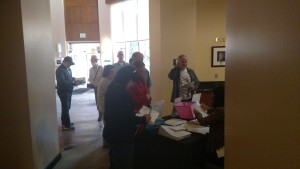
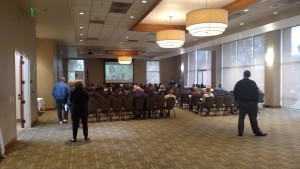

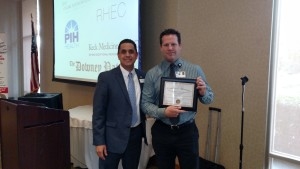
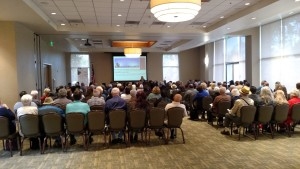

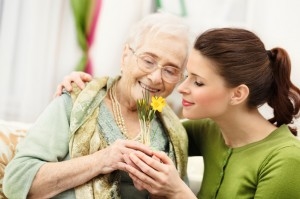 After suffering a stroke, you may be overwhelmed with confusion, concern, resentment, and a whole host of questions regarding what you should do next. Here at the RTH Stroke Foundation, we understand the challenges that you might be faced with after suffering a stroke, and that is why we have developed a new program specifically catered to the survivors of stroke. Welcome to the RTH Stroke Foundation Stroke Survivor Recovery Program. Our goal is to help support the Stroke Survivor along with their family, friends, and caregivers, by providing resources to help aid in the aftermath of a Stroke.
After suffering a stroke, you may be overwhelmed with confusion, concern, resentment, and a whole host of questions regarding what you should do next. Here at the RTH Stroke Foundation, we understand the challenges that you might be faced with after suffering a stroke, and that is why we have developed a new program specifically catered to the survivors of stroke. Welcome to the RTH Stroke Foundation Stroke Survivor Recovery Program. Our goal is to help support the Stroke Survivor along with their family, friends, and caregivers, by providing resources to help aid in the aftermath of a Stroke.